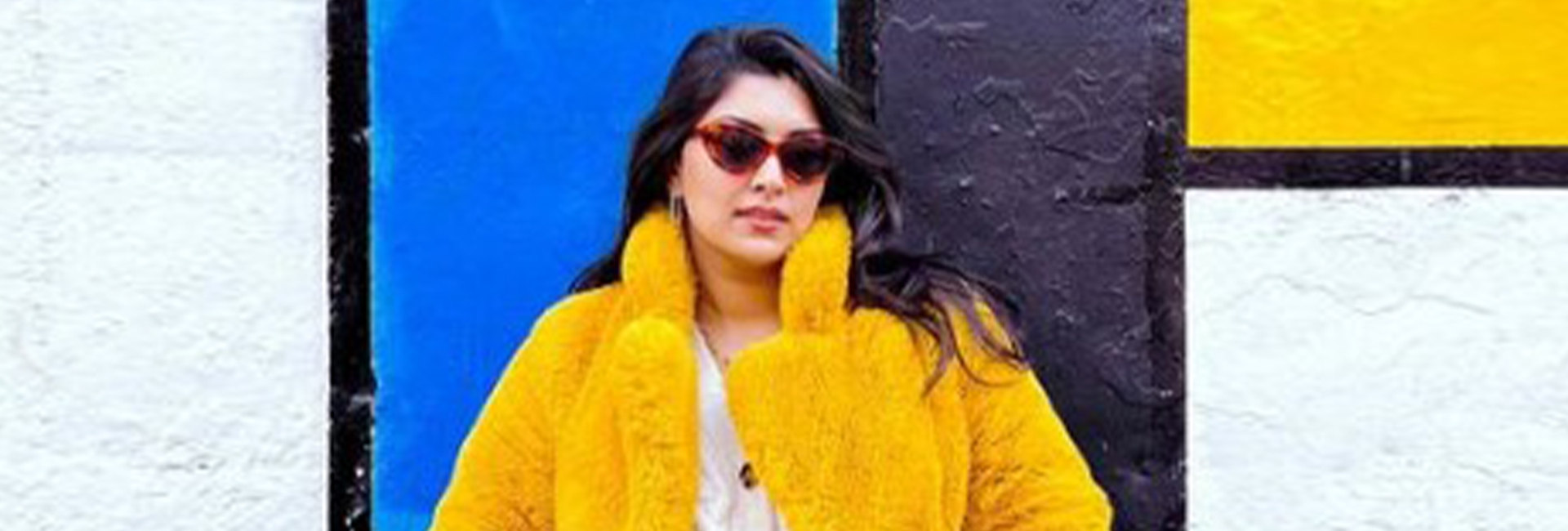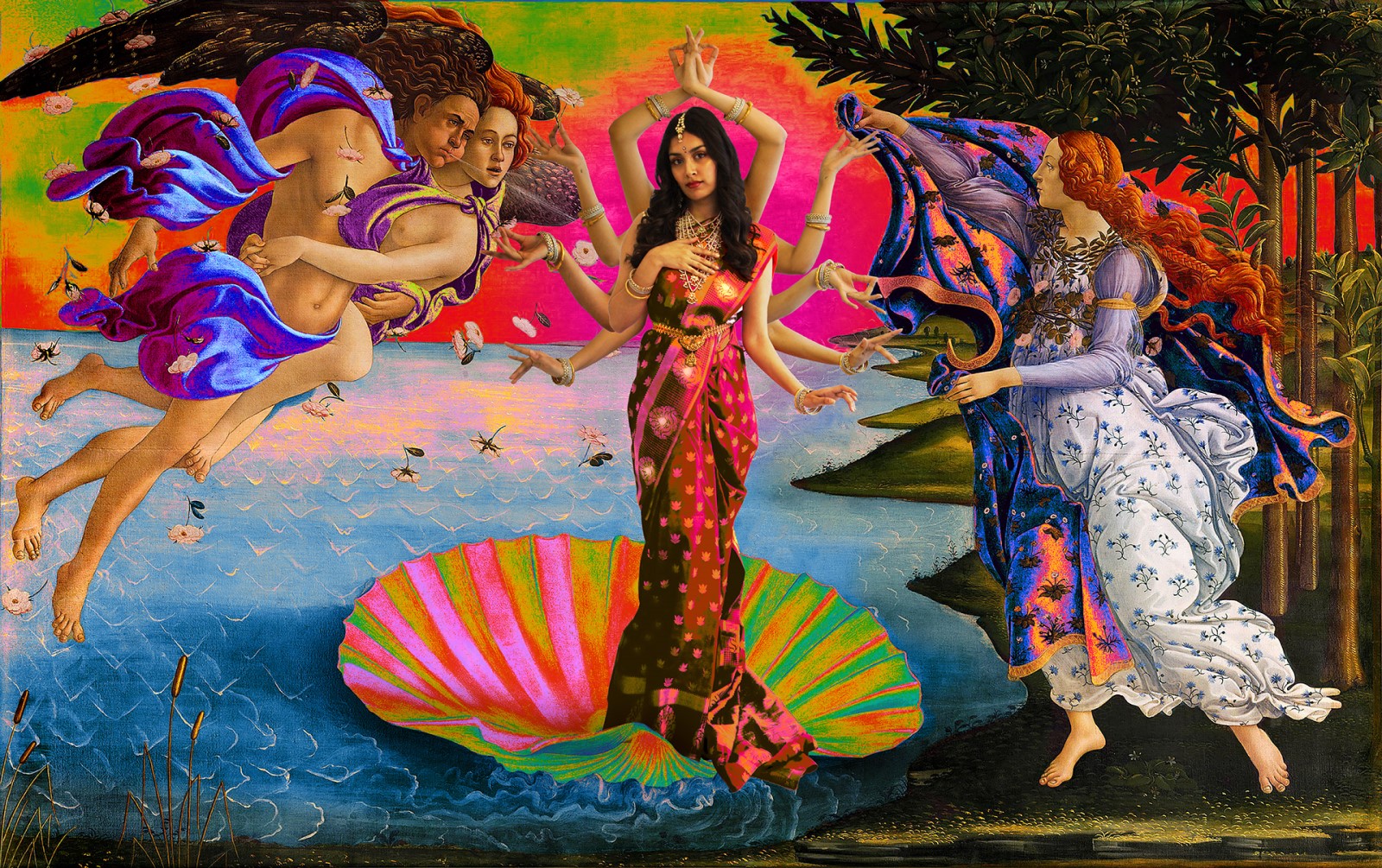(March 4, 2023) How does a mechanical engineer go from being a rocket scientist at NASA to striking it big in the creative design world? If Tanya Gupta’s story is anything to go by, through a lot of hard work, persistence and the courage to put yourself out there, even at the risk of looking silly. Tanya’s ability to show initiative landed her in Harper’s Bazaar but we’ll get to that in a minute. The 25-year-old holds a software patent at NASA and in 2021, became the first Indian American to be selected for the Adobe Creative Residency. Today, she’s the founder of Guptanya.JPG Studios and lives and works in New York City.
View this post on Instagram
Reaching for the stars
Tanya was eight years old when she fell in love with space, during a family trip to the Johnson Space Center. She decided then that she was going to be a rocket scientist. “I started doing a lot more Math and Science in school and when I was 11, I went to my first engineering class,” she said. “”I was able to realise that dream and made it to NASA as a rocket scientist.”
The Global Indian earned herself a place at NYU, where she went to study mechanical and aeronautical engineering. There, Tanya co-founded Curtain Call, a music business startup where they would sell tickets to shows around the city for belkow the asking price. They company partnered with various venues and that would give them leftover tickets to sell. “The venues were happy, the customer was happy and we were happy,” she smiles.
Her creative journey had already begun in high school, however. Her immigrant parents were “adamant” that Tanya be “academically rigorous.” Unlike her peers, she was discouraged from getting a job in high school. To make extra money, she chose freelance photography, taking on gigs for her friends, doing senior portraits and events.
Life as an engineer was also going well. Tanya chose a study abroad programme at NYU Berlin, where she mae her first foray into augmented reality. She was also a teaching assistant at Stanford University’s high school summer camp, where she taught teenagers who wanted to take college classes for extra credit. That led her, she says, to NASA.

Tanya at NASA. Photo: NYU
Life at NASA
Tanya did two stints at NASA, both as a student and even turned down a job offer. The first stint was as Ops Lead on the PRANDTL-M (Preliminary Research Aerodynamic Design to Land on Mars) aircraft at the Armstrong Flight Resarch Center. “The mission is to implement Ludwing Prandtl’s 1933 bird wing design on an aircraft that is intended to perform the first-ever Martian flight,” she explained. “It was going to be first ever aircraft on Mars.” The teams were asked to sign the original design and that model was sent to the Smithsonian National Air and Space Museum, where it remains. “If you’re at the Smithsonian, you can see my autograph,” she laughs.
She was also mentored by Al Bowers, the chief scientist at Armstrong and an expert on Prandtl’s alternative wing theory. “He’s the coolest person I’ve ever met – which I decided one day when he casually told me about the time he hung out with Buzz Aldrin,” she remarked. She even “got to do a couple of barrel rolls on an F-15.”
The second internship was at the Kennedy Space Centre, after her study abroad programme at NYU Berlin. There, she helped patent a 3D modelling conversion tool. Essentially, polygon-based models, the most common type of modeling for video games and animation studios. NASA had plenty of these, which they wanted to showcase to clients. However, they needed mesh-based models, which represent surface but have nothing inside to see. There was no shortcut to creating them. Tanya earned herself a software patent for creating a “one-stop shop where you can input a polygon-based model and turn out a mesh-based model,” she said.
A lockdown hobby
View this post on Instagram
Tanya eventually turned down a job offer from NASA, choosing instead to join IBM as a reality engineer in 2019. Still, she was hungry for the chance to create and “needed something to motivate me to continue that practice and skill.” She spent her time learning from YouTube tutorials and to build her design cred and hopefully, be an art director someday. “My wall used to be covered in editorials and I’d tried, multiple times to get the free trial of (Adobe) Photoshop,” she said. “Every single time, it was so overwhelming, and I didn’t have the tools, time or resources to devote to it.”
So, in 2020, when the world went into lockdown and Tanya’s job went completely remote, she asked friends to send her their smartphone selfies. Submissions came pouring in almost at once. Every day, Tanya would pick one and spend three to five hours practicing a new Photoshop skill she wanted to try out. At the end of the lockdown, Tanya had a portfolio, with dozens of works of art that her audience, it turned out, really enjoyed. She posted them with the hastag #QuarantineArt”.
One of her early large projects was a recreation of her favourite Botticelli work – The Birth of Venus. “I had this idea to create my own version and call it the Birth of Parvati, who is the Hindu goddess of love,” she said. “I thought it would be a really cool juxtaposition.”
Adobe Creative Residency Program
In 2021, acting almost on a whim, Tanya applied to the Adobe Creative Residency. It wasn’t a whim, really, because thousands of hours of work had gone into building a portfolio and learning her way around Adobe Photoshop. She went there hoping to learn about augmented reality projects but ended up focussing on photoshop and compositing. “Recreating art is like a thing for me,” she says – she even recreates scenes from her favourite game, SIMS 4.
“I loved Kim Kadarshian’s look at Saturday Night Life, so I recreated that,” she says. She copied the outfit, analysed the photograph to figure out the lighting and recreated the image in a dark room, putting herself in the picture. She also has her own take on Barbie and Ken.
Finding herself as an artist
View this post on Instagram
Validation was pouring in from brands and audiences on social media. While major brands commended her work, everything was still unpaid. Tanya saw herself designing magazine covers but without experience, she couldn’t find a gig. She ended up creating a mock-up of a Harper’s Bazaar cover – “I styled, modelled, photographed, edited and designed everything myself. I called it manifestation in action and it actually led to me being featured in Harper’s Bazaar. If you put youself out there, the right person might just see it and it could just lead you to the right place,” she remarks.
Harper’s Bazaar asked her, in a recent interview, about her future plans – “I’m setting myself up for an invite to the Met Gala in 2023.”




